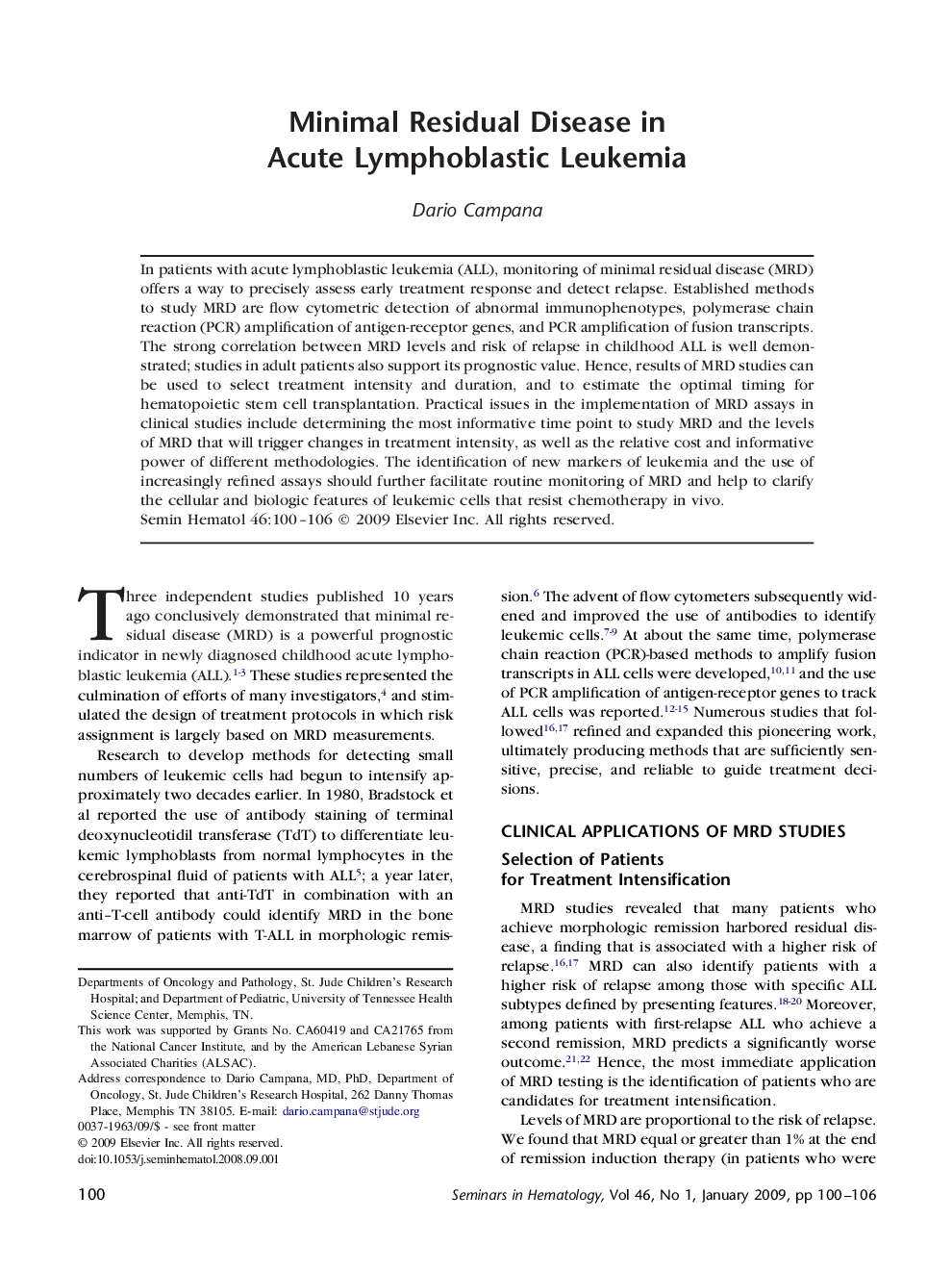| Article ID | Journal | Published Year | Pages | File Type |
|---|---|---|---|---|
| 3333954 | Seminars in Hematology | 2009 | 7 Pages |
In patients with acute lymphoblastic leukemia (ALL), monitoring of minimal residual disease (MRD) offers a way to precisely assess early treatment response and detect relapse. Established methods to study MRD are flow cytometric detection of abnormal immunophenotypes, polymerase chain reaction (PCR) amplification of antigen-receptor genes, and PCR amplification of fusion transcripts. The strong correlation between MRD levels and risk of relapse in childhood ALL is well demonstrated; studies in adult patients also support its prognostic value. Hence, results of MRD studies can be used to select treatment intensity and duration, and to estimate the optimal timing for hematopoietic stem cell transplantation. Practical issues in the implementation of MRD assays in clinical studies include determining the most informative time point to study MRD and the levels of MRD that will trigger changes in treatment intensity, as well as the relative cost and informative power of different methodologies. The identification of new markers of leukemia and the use of increasingly refined assays should further facilitate routine monitoring of MRD and help to clarify the cellular and biologic features of leukemic cells that resist chemotherapy in vivo.
